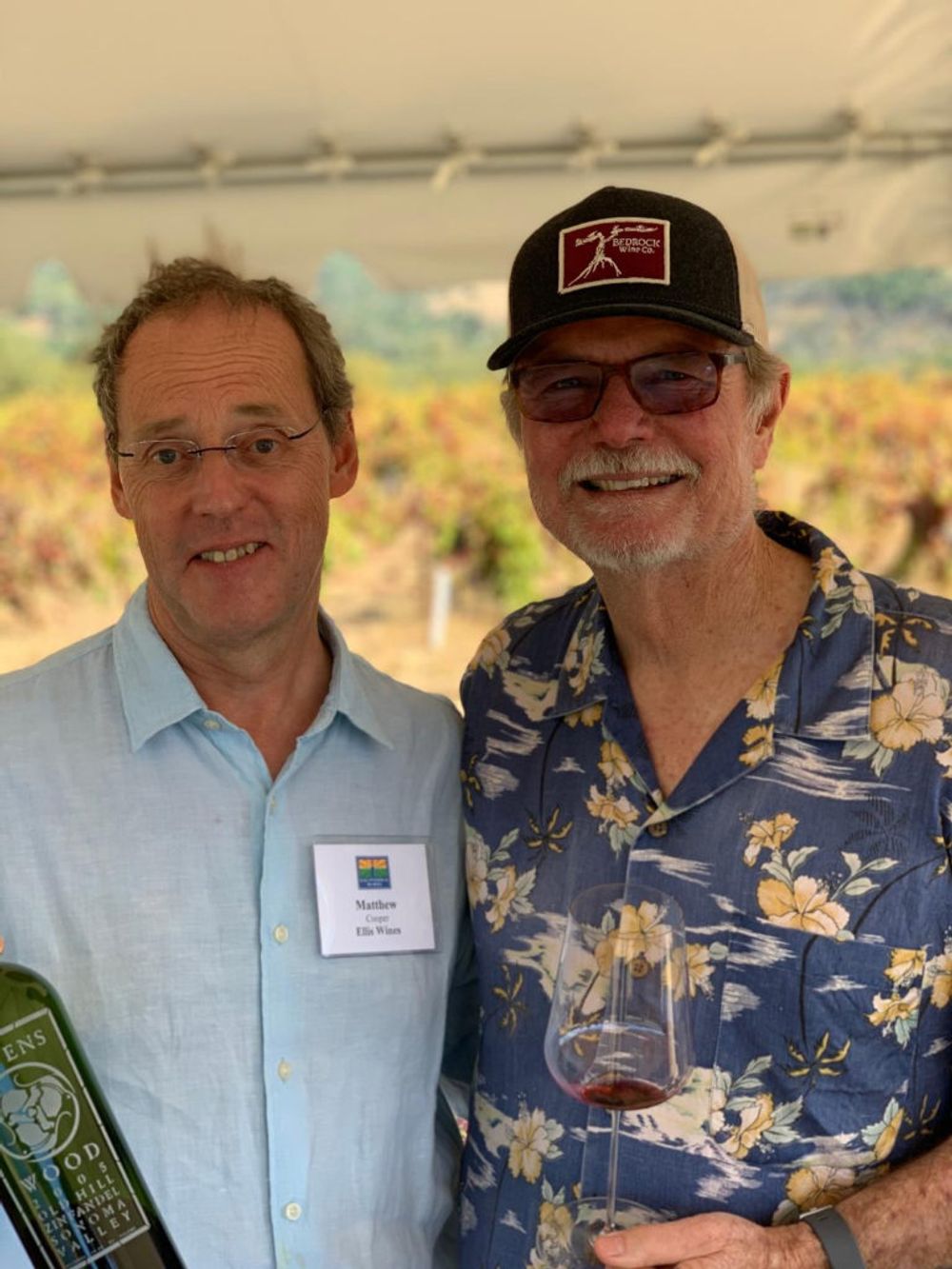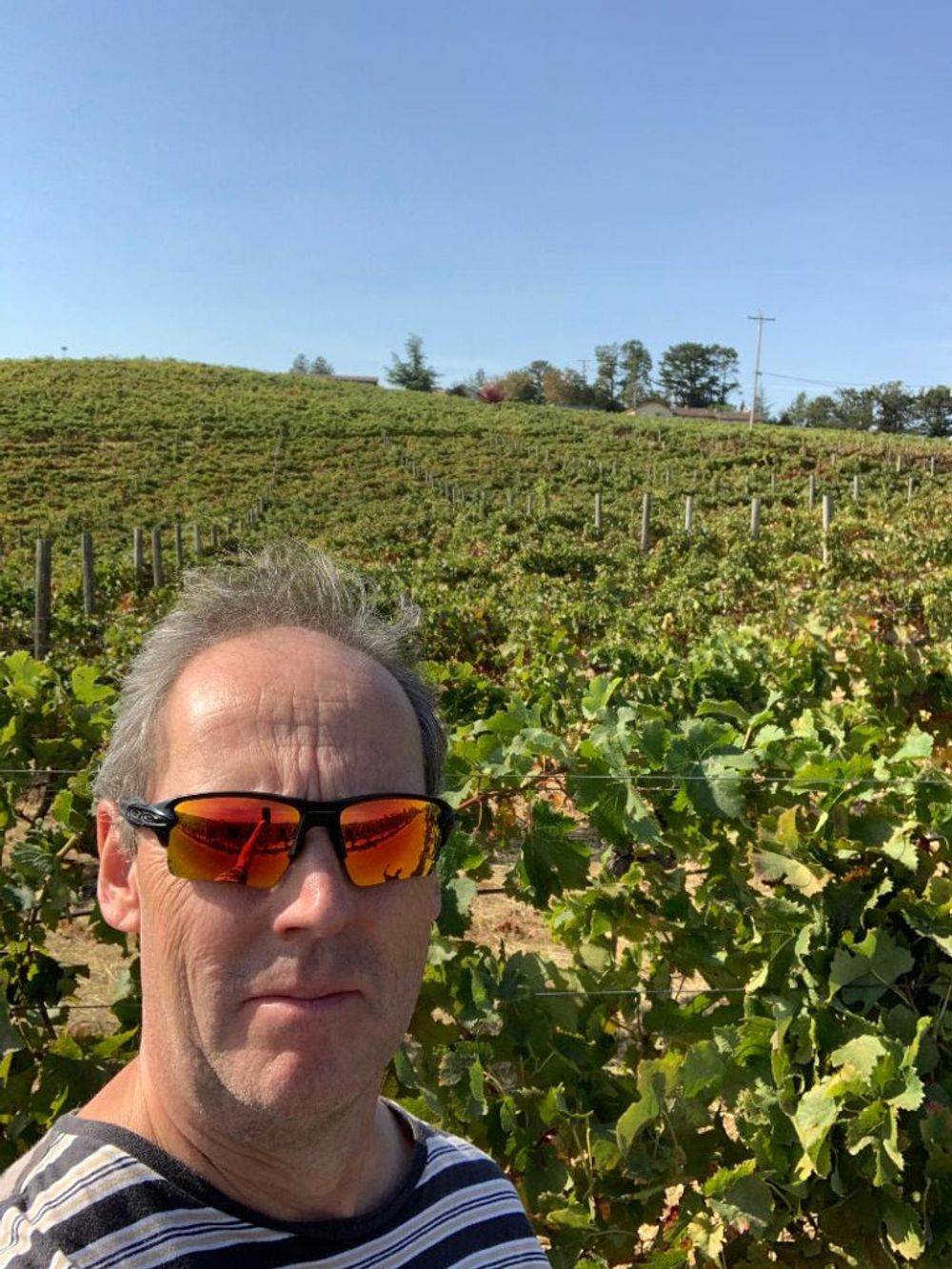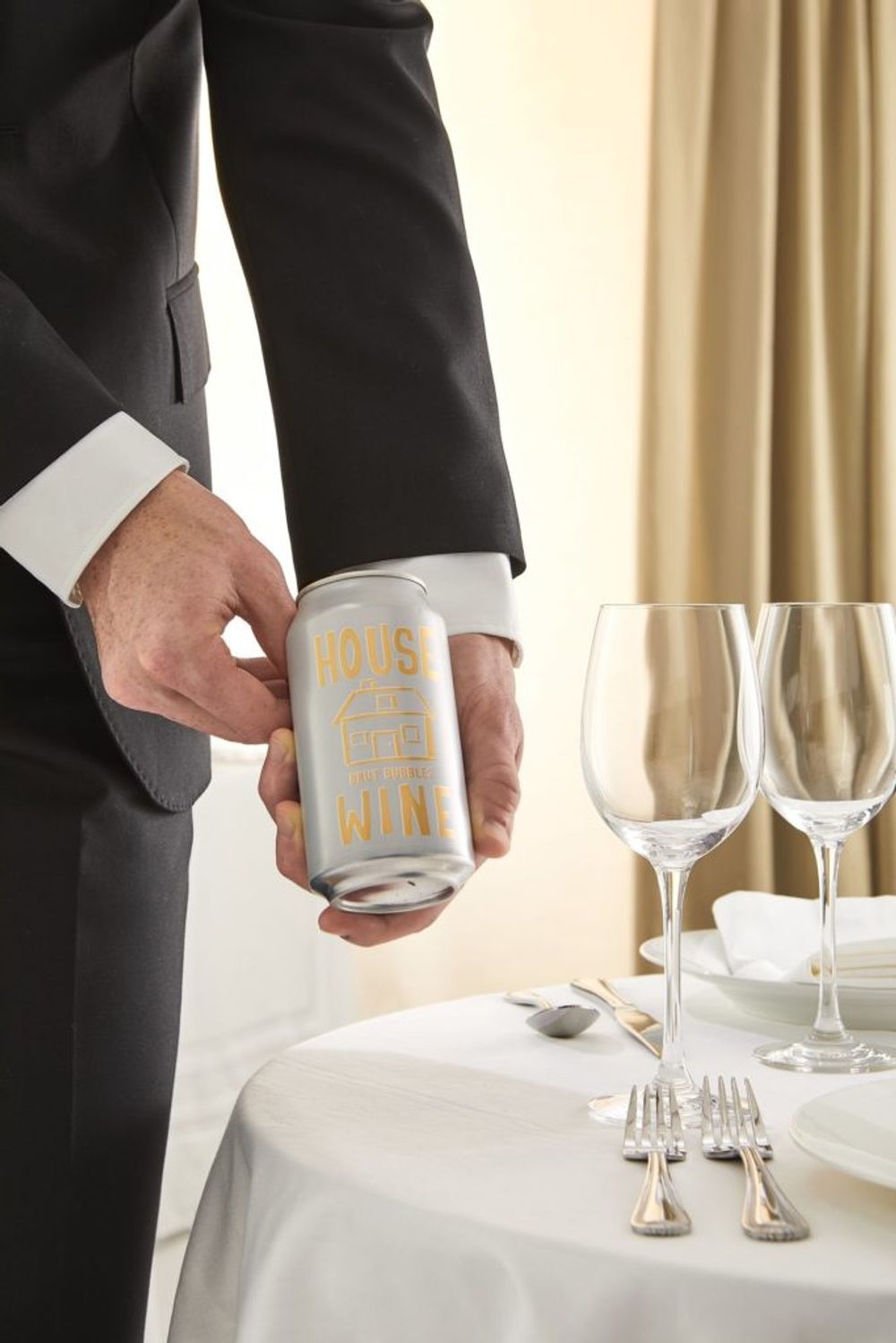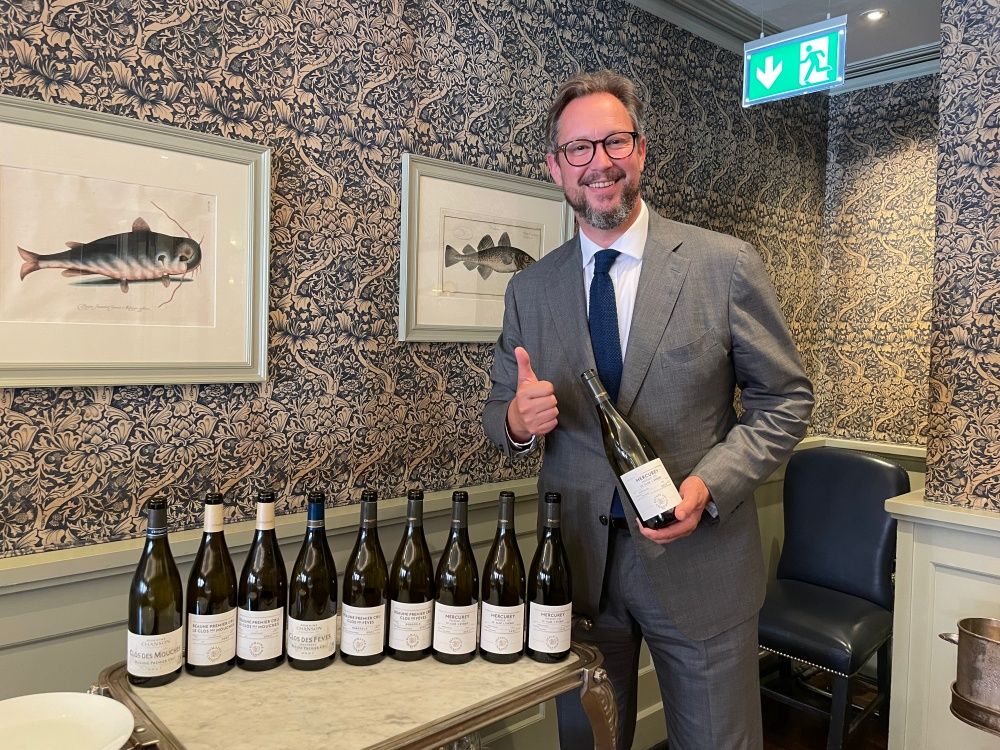Having seen how seriously Matthew Cooper takes his wine buying responsibilities on a buying trip to California in the autumn it is fascinating to read his look back on 2019 and his Buying Year for Ellis Wines.
How has 2019 for you been in terms of sourcing and availability?
Very productive. There are more innovative producers out there than ever before and with declining demand in many countries with a traditional wine drinking culture there is more pressure for success on the export market.
Which areas have been the most successful in terms of value and availability?

Matthew Cooper with Californian winemaker Joel Peterson during a buying trip to California last autumn
For us regional Spain, eastern Europe, South Africa and especially Sicily have been a focus for value this year.
Do you see that continuing into 2020?
Yes. We have already identified potential new partners across many regions. It often takes a year or even longer before a new partnership will result in new wines arriving in the market. Much of our buying activity in 2019, for example, will not see fruition until 2020. That’s not because we are slow to respond it’s just the on-trade likes continuity and wine lists may not change more than once or twice a year. We also sometimes hold off bringing in new wines until market conditions improve, and increasingly, we work more in a partnership where wine styles can be influenced, labels and presentation will be developed to meet market demands and this takes time.
Which new areas do you see doing well in 2020?

Matthew Cooper is keen to bring in more wines from Georgia in 2020
We’re looking at a new wave of maverick Australia and New Zealand boutique producers (in the Swartland mould). I also see Georgia creating more of a ripple.
Which areas did not do well in 2019 and what impact did it have on what you were buying?
One area is Chile which has lost consumer appeal, perhaps because too much is being sold cheaply in the major retailers. It’s no longer perceived as innovative or evolving enough. We have long term partnerships with producers who have been responsive but it’s hard work to revive sales.
Champagne has also suffered, but we’ve been delighted with sales of English sparklers, Cremant and Blanquette de Limoux.
Really the Biggest problem is the consumer aversion to spending over £40 in the on-trade. As an example, a European wine purchased at €3 ex-cellars will end up on a restaurant wine list at £29 whereas a wine purchased at €5 will probably be priced over £40. Now there is a huge difference in quality and variety between a €3 and €5 wine. Everyone wants the innovative €5 wine but they won’t pay for it in the restaurants and bars.

Cooper out in his field of work…literally
How do you decide to take on a new producer or partner – what criteria do you use?
We try to listen to our market, predict new trends and match with producers we feel comfortable with.
How is the UK market looking to producers around the world now?
London is still very attractive for aspiring wine producers. We are incredibly lucky.
What trends are you seeing in terms of what styles of wine are working the best in the market with customers?
Fuller, fresher and lower alcohol wines is where the biggest demand is coming from. Provenance is also becoming more important along with environmental issues, lower sulphites, fewer chemicals etc.
Are you buying wine more to fit into different formats like keg or cans?

How long before we see wines being served as normal in restaurants?
We’re waiting for the wine in can revolution to kick off. But when prices are more competitive this is going to be big. There are already some impressive California wines in can on the shelves in the States.
What was the best drinking and eating experience you had in 2019?
A red qvevri wine made from 450 different Georgian varietals at Shumi winery, Khaketi, drunk during a traditional feast whilst a male choir sang in Georgian polyphony. One bunch of each variety had been pooled into a single qvevri with one month on skins, astoundingly complex!
What did you do over Christmas?
We escaped to a rural retreat in Dorset. Open fires and no TV.
What did you drink?

You’re probably expecting an opulent Burgundy here, but it was a pint of ‘Death by Caribbean Chocolate Cake Stout’ from Siren Craft Brew, amazing beer.
What will you be watching?
The fire.
What’s your favourite Christmas song?
We’ve got a thing about ‘Dominic the Donkey’ in the office, not really a favourite but impossible to get out of your head. At home I’m more likely to listen to Bach’s Weihnachtsoratorium.










































